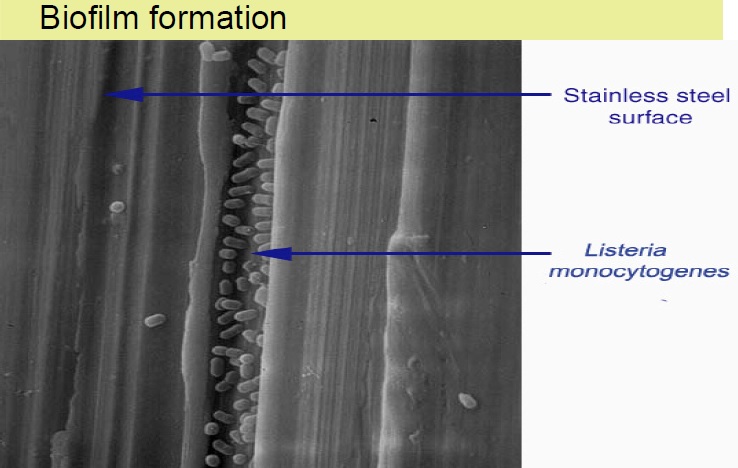- About us
- Asset Management
- Home
- Interpersonal relation
- Points store
- Production and operation
- 01, Production systems and operations management
- 02, Operations Strategy
- 03, Tours of operations
- 04, Forecasting
- 05, Product Design and Operations
- 06, Capability Planning and Facility Location
- 07, Selecting the Process Structure and Technology
- 08, Process Design and Facility Layout
- 09, Waiting or Queueing System
- 10, Job design, Work methods, and Organization
- 11, The Quality management system
- Quality Management Doctor
- Aseptic production of milk and juice
- Bacteria, virus an human life
- Food Safety and Microbial Quality
- Bacteria which cannot be killed by UHT-Nightmare of UHT milk
- Biofilm changes the characteristic of microbes compromising food safety
- Clean to remove microbes in the pipelines of dairy plant
- Guidelines for the microbiological quality of some ready-to-eat foods sampled at the point of sale
- Infection source of bacteria frequently found in Dairy industry
- Manufacturers and Processors requirements of ice cream, ice milk, ice cream mix and frozen youghurt
- Microbiological Quality of Ice Cream after HACCP Implementation: a Factory Case Study
- Movie - Avoid microbial infection or contamination in aseptic production
- The identification of bacteria frequently found in dairy industry
- Keeping Cows Cool and Comfortable to Improve milk production of cow
- Operation and quality management
- Quality Management Doctor
- OCE to measure the personnel performance?
- TPM world class management
- Team building
Biofilm changes the characteristic of microbes compromising food safety
Submitted by Wise on Tue, 10/28/2014 - 09:17
English
 Adhesion of microorganisms to food processing equipment surfaces and the problems it causes are a matter of concern to the food industry. Biofilms have the potential to act as a chronic source of microbial contamination which may compromise food quality and represent a significant health hazard. To control these problems, it has been recognized that a greater understanding of the interaction between microorganisms and food-processing surfaces is required.Several groups have reported the ability of bacteria to attach to surfaces commonly found in the food processing environment, such as rubber and stainless steel . The increased resistance of these sessile organisms towards disinfectants, heat and sanitizing agents often exacerbates the problems caused by microbial fouling and can contribute to the inefficacy of cleaning in place systems. Development of adsorbed layers, often termed “conditioning” of a surface, is considered to be the first stage in biofilm formation and has been widely demonstrated. Because this conditioning film is likely to change the physicochemical properties of the substratum and thus to influence bacterial attachment, an understanding of these initial interactions is crucial in identifying control measures. A variety of proteins, including milk proteins, have been shown to affect bacterial adhesion to surfaces such as polystyrene; hydroxyapatite; glass, rubber, and stainless steel; silica; and medical implants. The nature of the effect appears to vary with the organism, substratum, and protein under investigation.
Adhesion of microorganisms to food processing equipment surfaces and the problems it causes are a matter of concern to the food industry. Biofilms have the potential to act as a chronic source of microbial contamination which may compromise food quality and represent a significant health hazard. To control these problems, it has been recognized that a greater understanding of the interaction between microorganisms and food-processing surfaces is required.Several groups have reported the ability of bacteria to attach to surfaces commonly found in the food processing environment, such as rubber and stainless steel . The increased resistance of these sessile organisms towards disinfectants, heat and sanitizing agents often exacerbates the problems caused by microbial fouling and can contribute to the inefficacy of cleaning in place systems. Development of adsorbed layers, often termed “conditioning” of a surface, is considered to be the first stage in biofilm formation and has been widely demonstrated. Because this conditioning film is likely to change the physicochemical properties of the substratum and thus to influence bacterial attachment, an understanding of these initial interactions is crucial in identifying control measures. A variety of proteins, including milk proteins, have been shown to affect bacterial adhesion to surfaces such as polystyrene; hydroxyapatite; glass, rubber, and stainless steel; silica; and medical implants. The nature of the effect appears to vary with the organism, substratum, and protein under investigation.
Comments
Biofilm exists in the floater
If the floater cannot be cleaned enough, then biofim can form there to produce sour packages.